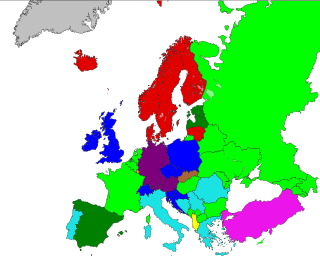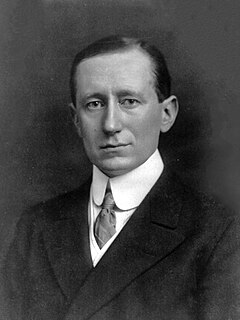A television network or television broadcaster is a telecommunications network for distribution of television program content, where a central operation provides programming to many television stations or pay television providers. Until the mid-1980s, television programming in most countries of the world was dominated by a small number of terrestrial networks. Many early television networks evolved from earlier radio networks.

A television licence or broadcast receiving licence is a payment required in many countries for the reception of television broadcasts, or the possession of a television set where some broadcasts are funded in full or in part by the licence fee paid. The fee is sometimes also required to own a radio or receive radio broadcasts. A TV licence is therefore effectively a hypothecated tax for the purpose of funding public broadcasting, thus allowing public broadcasters to transmit television programmes without, or with only supplemental funding from radio and television advertisements. However, in some cases, the balance between public funding and advertisements is the opposite – the Polish broadcaster TVP receives more funds from advertisements than from its TV tax.
The Canadian Broadcasting Corporation, branded as CBC/Radio-Canada, is a Canadian public broadcaster for both radio and television. It is a federal Crown corporation funded by the Government of Canada. The English- and French-language service units of the corporation are commonly known as CBC and Radio-Canada, respectively.

Broadcasting is the distribution of audio or video content to a dispersed audience via any electronic mass communications medium, but typically one using the electromagnetic spectrum, in a one-to-many model. Broadcasting began with AM radio, which came into popular use around 1920 with the spread of vacuum tube radio transmitters and receivers. Before this, all forms of electronic communication were one-to-one, with the message intended for a single recipient. The term broadcasting evolved from its use as the agricultural method of sowing seeds in a field by casting them broadly about. It was later adopted for describing the widespread distribution of information by printed materials or by telegraph. Examples applying it to "one-to-many" radio transmissions of an individual station to multiple listeners appeared as early as 1898.
Public broadcasting involves radio, television and other electronic media outlets whose primary mission is public service. Public broadcasters receive funding from diverse sources including license fees, individual contributions, public financing and commercial financing.

The media of Canada is diverse and highly regionalized. News media, both print and digital and in both official languages, is largely dominated by a handful of major media corporations. The largest of these corporations is the country’s national public broadcaster, CBC/Radio-Canada, who also plays a significant role in producing domestic cultural content, operating radio and TV networks in both English and French.

Iraq was home to the first television station in the Middle East, which began during the 1950s. As part of a plan to help Iraq modernize, English telecommunications company Pye Limited built and commissioned a television broadcast station in the capital city of Baghdad. Following the 2003 US-led invasion of Iraq, the Iraqi state media collapsed. In June 2004, a Communications and Media Commission was set up to approve and grant license for all the country's media. By 2011, Iraq was the headquarters of 49 free-to-air satellite channels, one of the highest numbers in the region. Until 2003, satellite dishes were banned in Iraq, and there was a limited number of national terrestrial stations. After 2003, the sale of satellite dishes surged, and free-to-air channels entered the market. There are 17 terrestrial channels, of which one is funded by the US government through the U.S. Agency for Global Media (Alhurra-Iraq), and seven are owned by the state broadcaster Iraqi Media Network. In March 2011, Al Jazeera was granted rights to resume operations after being banned in 2004. Plans were established to set up a free-media zone based in Baghdad, the Baghdad Media City, by the end of 2014.
A non-commercial educational station is a radio station or television station that does not accept on-air advertisements, as defined in the United States by the Federal Communications Commission (FCC) and was originally intended to offer educational programming as part, or whole, of its programming. NCE stations do not pay broadcast license fees for their non-profit uses of the radio spectrum. Stations which are almost always operated as NCE include public broadcasting, community radio, and college radio, as well as many religious broadcasting stations. Nearly all Non-Commercial radio stations derive their support from listener support, grants and endowments, such as the governmental entity Corporation for Public Broadcasting (CPB) that distributes supporting funds provided by the congress to support Public Radio.

Korean Broadcasting System (KBS) is the national broadcaster of South Korea. Founded in 1927, it is one of the leading South Korean television and radio broadcasters.

It is generally recognized that the first radio transmission was made from a temporary station set up by Guglielmo Marconi in 1895 on the Isle of Wight. This followed on from pioneering work in the field by a number of people including Alessandro Volta, André-Marie Ampère, Georg Ohm and James Clerk Maxwell.

CHMI-DT is a television station licensed to Portage la Prairie, Manitoba, Canada, broadcasting the Citytv network to the Winnipeg area. Owned and operated by Rogers Sports & Media, the station has studios at 8 Forks Market Road in downtown Winnipeg, and its transmitter is located adjacent to Bohn Road in Cartier.
In North American broadcasting, a local marketing agreement (LMA), or local management agreement, is a contract in which one company agrees to operate a radio or television station owned by another party. In essence, it is a sort of lease or time-buy.

The mass media in South Africa has a large mass media sector and is one of Africa's major media centres. While South Africa's many broadcasters and publications reflect the diversity of the population as a whole, the most commonly used language is English. However, all ten other official languages are represented to some extent or another. Afrikaans is the second most commonly used language, especially in the publishing sector.

Ràdio i Televisió d'Andorra, S.A. (RTVA) is the state-owned public television and radio broadcaster in the Principality of Andorra. It operates a television channel, ATV, and two radio stations, RNA and AM, all of which broadcast in Catalan.
In the United States, commercial radio stations make most of their revenue by selling airtime to be used for running radio advertisements. These advertisements are the result of a business or a service providing a valuable consideration, usually money, in exchange for the station airing their commercial or mentioning them on air. The most common advertisements are "spot commercials", which normally last for no more than one minute, and longer programs, commonly running up to one hour, known as "informercials".

The mass media in Indonesia consist of several different types of communications media: television, radio, cinema, newspapers, magazines, and Internet-based websites.

Broadcasting & Cable is a weekly telecommunications industry trade magazine published by Future US. Previous names included Broadcasting-Telecasting, Broadcasting and Broadcast Advertising, and Broadcasting. B&C, which was published biweekly until January 1941, and weekly thereafter, covers the business of television in the U.S.—programming, advertising, regulation, technology, finance, and news. In addition to the newsweekly, B&C operates a comprehensive website that provides a roadmap for readers in an industry that is in constant flux due to shifts in technology, culture and legislation, and offers a forum for industry debate and criticism.
The mass media in Iceland are well-developed for a country of its size. The Constitution of Iceland guarantees absolute freedom of speech. Therefore, Iceland’s media are among the freest in the world.
Television/Radio Age magazine was a US television industry trade magazine published by Television Editorial Corporation from 1953 to 1989. Originally titled Television Age, the magazine began as a monthly until 1956 and biweekly thereafter. Television/Radio Age was known for its dry but detailed coverage of the broadcasting industry and pioneering efforts to connect Madison Avenue with program makers. It was published alongside sister publications Television/Radio Age International, Cable Age and the Twelve City Guide - all of which folded in 1989 following financial difficulties.
Radio was introduced in Canada in the late 1890s, although initially transmissions were limited to the dot-and-dashes of Morse code, and primarily used for point-to-point services, especially for maritime communication. The history of broadcasting in Canada dates to the early 1920s, as part of the worldwide development of radio stations sending information and entertainment programming to the general public. Television was introduced in the 1950s, and soon became the primary broadcasting service.











